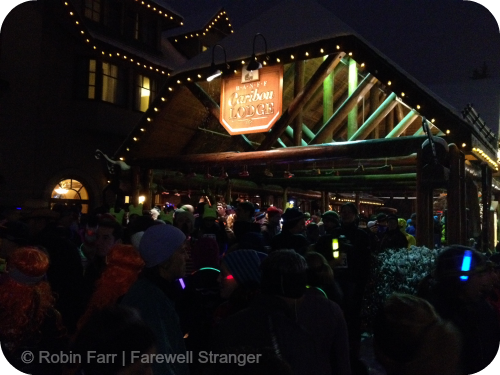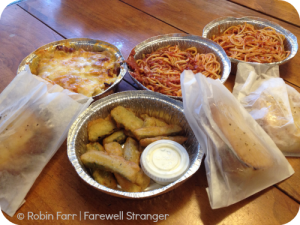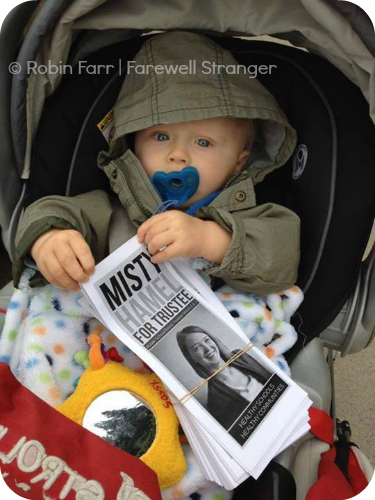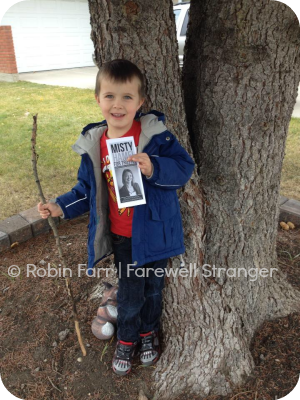One lovely summer evening, my friend Tamara and I were running by the river. Tamara, you should know (because it’s relevant to this story), is a little bit crazy. She runs crazy races in crazy costumes and thinks nothing of getting up crazy early on a Saturday or Sunday morning to run 10k.
I should have kept this in mind when registering for a race she told me about.
Alas, I didn’t think about any of that (which might have been because she bought me ice cream after that run by the river). Instead all I heard was “Banff” and “night race” and “glow sticks.” I heard “five miles” and mentally translated that to 8k and decided all of those factors added up to a race that I should register for. I’d get to run in the mountains in one of my favourite towns, it would be my first night race, and the distance was just enough to push me to run a little bit more than I had been. So I registered, booked us into a hotel for the weekend, and considered myself quite adventurous.
Somewhere between registering and race weekend I started thinking of the race as 5k (instead of five miles), and it wasn’t until I was talking to a co-worker last week about our weekend plans that I remembered. “Um, isn’t that race five miles?” she asked. “Um, shit,” I thought. Yes. Yes, it is. Ah well. I’m sure it will be fine, I figured.
Racers in the dark near the start line
And then race day came and we headed out of town. My mom (who always manages to catch these things) saw on Twitter that the race course had been changed because there was a Grizzly on the original course (and I don’t know about you but I certainly don’t want to be eaten by a large, hungry, male Grizzly who’s stocking up before hibernating for the winter). And I looked at the description of the race and realized the course had us running straight up a mountain road. The original course, which I hadn’t bothered to check because adventurous people don’t worry about these things, also had us running straight up a mountain road, but there was also, I think, more of an over-and-around element to the original course. The revised course was pretty much exactly straight up the mountain and then straight back down again.
Did I mention it was snowing?
It had snowed all day and I’d been up that mountain road many times before (by car, thank you very much) so I knew how long and steep it was (and how icy it would be coming back down) and I wondered what I had gotten myself into.
I couldn’t do much but ignore the butterflies in my stomach and put on my Yaktrax and see what happened.
What happened—the details—doesn’t really matter. It was part painful and part exhilarating, part dark and slippery and part beautiful. It went from a ridiculous-sounding idea to actually quite fun.
Mostly, it was a reminder that every once in a while we all need to do something just a little bit crazy.
I’m joining Greta from Gfunkified as co-host of #iPPP (or iPhone Photo Phun), a weekly link-up that requires nothing more than a blog post with a photo from a phone camera (any phone camera, not just iPhones). We want to see your funny, your yummy, your heartfelt, your favourite phone photos of the week. Link up below!



 So…I’ll happily take any efficiency tips you care to share and in trade I’ll offer you one of mine: I’ve recently been introduced to
So…I’ll happily take any efficiency tips you care to share and in trade I’ll offer you one of mine: I’ve recently been introduced to 












